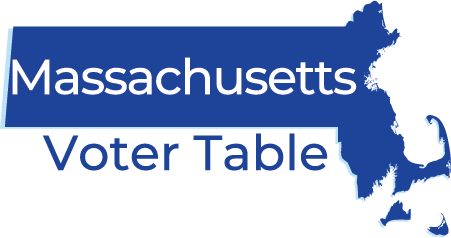BOSTON — Teenagers too young to vote in Massachusetts can sign up in anticipation of going to the ballot box, and hundreds of thousands have taken part in the pre-registration program.
More than 230,000 teens have pre-registered to vote since 2016, when the law went into effect, according to the latest data from Secretary of State Bill Galvin's office.
The program was created under a 2014 law allowing 16- to 17-year-olds to submit information to local election clerks so that they would be registered on their 18th birthdays.
The changes, backed by a coalition of good-government groups, allowed voters to register online and created an online portal to check voter registration status.
"This is a big win for democracy," said Geoff Foster, executive director of Common Cause Massachusetts, a nonpartisan group. "We are seeing youth voter turnout continuing to increase, and the ability to engage a young person while they're still in high school increases the likelihood that they will become civically engaged when they reach voting age."
Participation in the first year of the program was lackluster, with only 6,616 teens pre-registering to vote.
But that number doubled in the following year and the state has averaged about 37,000 pre-registrations a year since then, according to Galvin's office
Locally, Lynn has seen the greatest participation in the program, with 2,429 teens pre-registered to vote since 2016, including more than 1,000 in 2021 and 2022 ahead of the upcoming midterm elections, according to the latest data.
Haverhill has had 2,300 since 2016, Lawrence has had 2,056, Salem had 980, Newburyport had 831 and Gloucester had 722 pre-registrations.
Boston has recorded the largest number of pre-registrations, with 11,794 teens signing up to vote since the program went into effect, the data shows.
The pre-registration program was created when lawmakers approved a package of reforms aimed at boosting lagging voter participation — particularly among young adults.
Groups such as the Massachusetts League of Women Voters, work with high schools and community centers to boost participation in the democratic process, and it hold voter pre-registration drives to get students to sign up before they graduate from high school.
Galvin’s office does not have data on the number of young voters who participated in state elections, or how many who pre-registered actually voted after they turned 18.
More than 4.8 million people are currently registered to vote in Massachusetts.
Unenrolled voters — those unaffiliated with a political party — remain the majority of the state’s electorate. About 60% of voters are unenrolled, while nearly 30% are registered Democrats and fewer than 10% are Republicans.
But turnout among young voters is especially low, even in national elections.
In the 2020 elections, turnout among voters 18-30 was 11 points higher than the 2016 presidential election, according to Vote.org, a nonpartisan group that works to expand voter registration.
An estimated 17 million young Americans will have turned 18 between the 2020 election and the 2022 midterms, the group said.
However, turnout in midterm elections is historically lower than during a presidential election.
And recent polls have shown a sizable chunk of the youth electorate is uncertain about the impact of their vote. A New York Times/Siena College poll in July found 48% of respondents between 18 and 29 said they felt "voting did not make a difference" in the operation of government.
Christian M. Wade covers the Massachusetts Statehouse for North of Boston Media Group's newspapers and websites. Email him at cwade@cnhinews.com.
